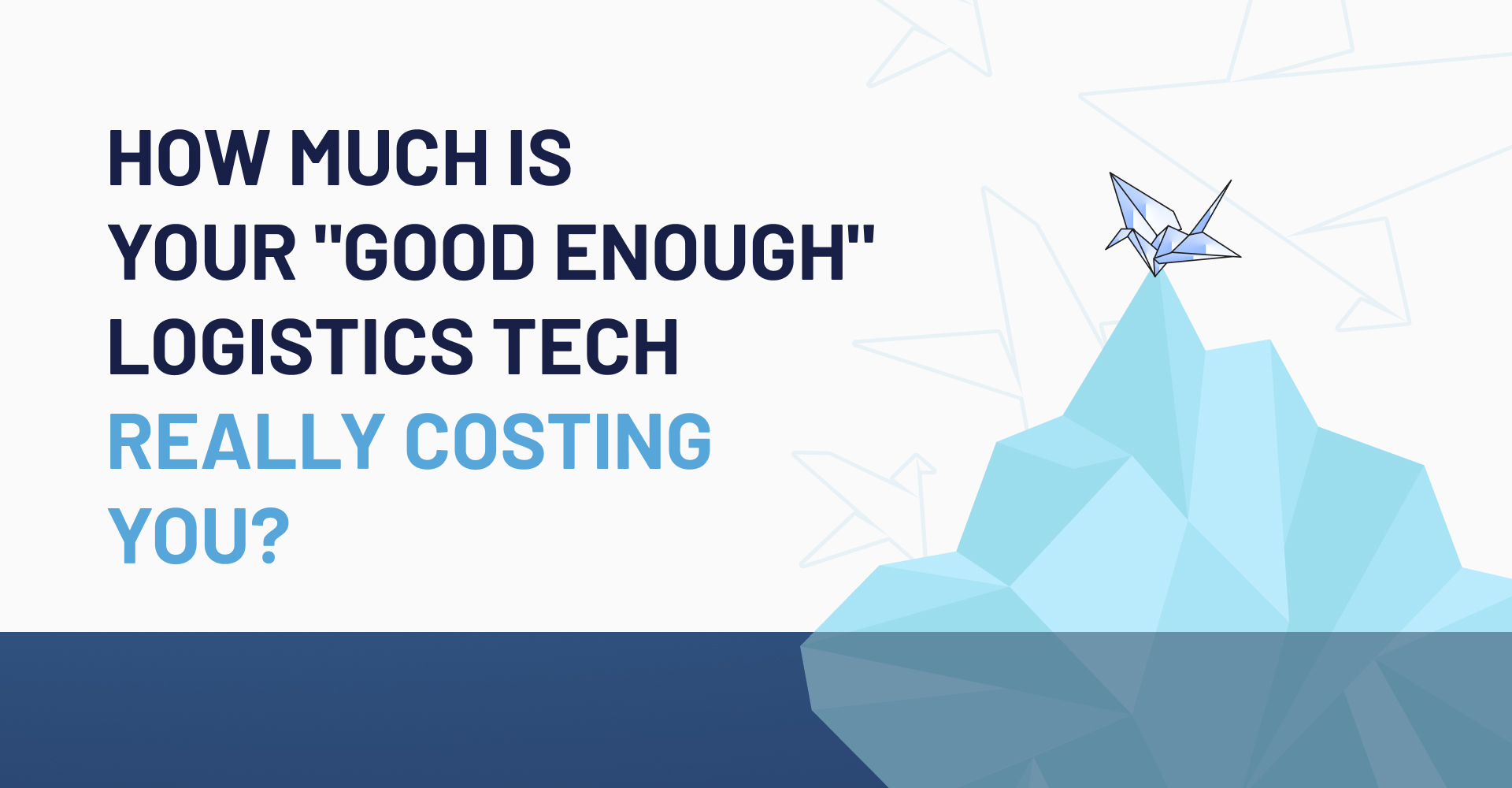
Is your logistics operation a well-oiled machine, or does it feel more like a daily firefight? Do you make decisions based on real-time data, or are you relying on gut feelings and the heroics of a few key employees?
The root of this chaos is almost always the same: a patchwork of disconnected systems, a lack of automation, and no real integration. This isn't just inefficient; it's a direct threat to your growth and profitability. In today's market, you simply can't afford it.
Use this maturity model to perform a quick assessment of your company. Find your level below, and understand the real cost of standing still.
Level 1: The Reactive Firefight
You are at Level 1 if:
- Your "tech stack" is spreadsheets, email, and phone. There are no specialized logistics systems to manage operations.
- Workflows are manual, inconsistent, and depend on "tribal knowledge" held by a few key people
- Data is either not captured or is completely unreliable. Decisions are made based on instinct and gut feeling because there are no metrics to guide the way.
- The primary activity is putting out the latest fire, and there's little time for planning.
The Cost of This Stage: Constant inefficiency, high potential for errors, and an inability to scale. You are perpetually stuck working in the business, not on it.
Level 2: The Functional Silos
You are at Level 2 if:
- You have basic standalone systems (like a generic TMS or accounting software), but they do not communicate with each other.
- Processes are documented but exist in departmental isolation, causing friction and rework.
- Data is being captured, but it remains trapped in separate systems. Without a unified view, no meaningful analysis or reporting is possible.
- There is no cross-functional integration, leading to friction and miscommunication between teams.
The Cost of These Silos: Data is trapped, preventing any meaningful analysis. Miscommunication between teams leads to errors, and a lack of a unified view makes strategic planning impossible.
Level 3: The Integrated Powerhouse
This is where logistics companies transform from reactive to efficient. The key is integration.
You are at Level 3 if:
- Your core systems (ERP, WMS, TMS) are connected and share data.
- Key internal processes are unified and standardized across the organization. The primary focus is on maximizing internal efficiency and creating a smooth, repeatable workflow.
- You use basic automation like barcode scanning, and for the first time, you have reliable KPIs to track what happened yesterday.
Level 4: The Collaborative Optimizer
Here, technology becomes a tool for optimization and collaboration, looking beyond your own four walls.
You are at Level 4 if:
- You use Business Intelligence (BI) platforms and modern APIs to integrate with partners.
- You have end-to-end visibility, allowing you to move beyond simple reports and use data to understand why things happened.
Level 5: The Digitized Leader
At the highest level, technology is a predictive and strategic weapon.
You are at Level 5 if:
- You have your own Proprietary Technology solutions (like your custom TMS, WMS, CRM)
- You use AI and Machine Learning for forecasting, route optimization, and predictive maintenance.
- Your processes are fully automated, allowing you to answer not only "What will happen?" but also "What should we do about it?", turning data into automated, optimized decisions.
The High Cost of Standing Still
Identifying your level is easy. The hard part is realizing you can't afford to stay there. Moving up the ladder isn't an expense; it's an investment in survival and growth. Here’s why:
- Your Competitors Aren't Waiting: Companies at Levels 4 and 5 are using technology to be faster, cheaper, and more reliable. Every day you spend in the lower levels, the gap widens.
- Inefficiency is a Tax on Your Growth: Every manual process, every data-entry error, and every hour spent reconciling information between disconnected systems is a direct tax on your profit margins.
- You're Making Decisions in the Dark: Without integrated data, your strategic decisions are just educated guesses. You can't optimize what you can't measure.
The question is no longer if you should invest in integrated technology, but how quickly you can do it to protect your business.
Ready to move up the ladder? Book a consultation with our team, and let’s help you diagnose your technology maturity and build a roadmap for healthy growth.







.png)







